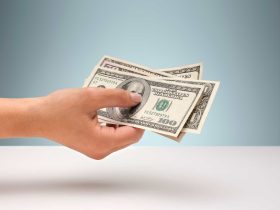Thursday morning opened the same way every morning has opened since July 5, 2022 – with the Treasury yield curve inverted at the 2-year and 10-year maturities. That’s 786 consecutive days (counting weekends and holidays) of an inverted curve, the longest on record by far (the previous record was 624 days in 1978). But on Thursday, the difference between the two maturities was a scant three basis points, or 0.03 percent, suggesting that the end of this magnificent streak is fast approaching. Since an inverted yield curve is supposed to be a reliable harbinger of a recession, enquiring minds want to know what happens next. Let’s look at some past data, bearing in mind as always that what happened before is not necessarily going to happen again.
Inversions By The Numbers
We will skip over the very brief recession of 2020 because (a) there was no substantial yield curve inversion to speak of before it happened, and (b) it probably would not have happened at all if the economy had not been manually shut down by the powers that be in response to the Covid-19 pandemic. Let’s look at the three recessions before that, starting with the so-called Great Recession of 2008.
The 2-10 Treasury curve inverted on December 27, 2005, a bit more than two years before the recession started on January 2, 2008. It flitted in and out of inversion for the intervening time, notching up 253 days of being inverted before resuming its normal (upward-sloping) shape on May 29, 2007. So there was about a seven-month gap between the end of the inverted yield curve and the beginning of the recession.
For the recession which began on April 2, 2001, the 2-10 curve tipped into inversion for the first time on June 10, 1998, and also went back and forth between inversion and normal for the more than two and a half years prior to the recession (241 days of inversion recorded). The last inversion occurred on December 27, 2000, about four months before the recession began.
Finally, the 1900 recession began on August 1 of that year. Ahead of that recession, the 2-10 curve inverted for the first time on January 5, 1989, and for the last time on March 19, 1990, a bit less than five months before the recession began.
Define “Near Future”
So what, if anything, does all this past data tell us about what to expect in the coming months? Well, let’s start with what economists normally tell us about inverted yield curves – that they presage a recession in the “near future.” Unfortunately, as the data we presented above show, there is not really a consistent definition to be applied to the term “near future.” Two years came and went between the first curve inversion and the 2008 recession, two- and three-quarter years elapsed before the 2001 downturn, and about one and three-quarter years before the 1990 episode. And for each of those recessions, there was a gap of at least several months between the time the curve de-inverted and the downturn began.
All of which says very little for anyone who wants to bet on if and when a recession will occur this time. We are about two years and two months away from that July 5, 2022, start date for this cycle’s inversion. By the time we come back after the Labor Day weekend, the 2-10 curve may – or may not – have resumed its normal upward-sloping shape for once and all. If it does, perhaps one could assume a four or five month gap – similar to the 1990 and 2001 downturns – meaning a recession commencing in early 2025. That time frame would seem to fit within the parameters of the previous cases.
The Expectations Game
But is that enough reason to build up a defensive portfolio position ahead of a putative economic downturn in the first quarter of 2025? We don’t think so. For one thing, the shape of the yield curve is in large part an outcome of expectations in the bond market. Expectations about the Fed, expectations about inflation, about the direction of interest rates elsewhere in the world, about the magnitude of the term risk premium, expectations about expectations, and on and on. To be perfectly honest, our confidence in the rationality of bond market expectations has diminished over the past two years – a period in which the market has forever been pricing in expected rate cuts that never happened (which could be a reason why this inversion has lasted for as many consecutive days as it has). In 2021, we witnessed the “meme-ification” of the stock market, and in 2022-23, that unfortunate trend made itself known in the bond market. Remember those six rate cuts that were going to happen in 2024, according to the bond market last December?
Mind you, we are not saying with any certainty that a recession won’t happen next year. We do see the economy slowing, and at some point, that slowing could continue into negative growth. But we do not see enough evidence yet to make a compelling case for a strong defensive move out of growth assets and into safety assets. We will continue to assimilate the data, but our actions are very unlikely to be driven by whatever the bond market happens to be telling us on any given day.
Enjoy the long Labor Day weekend, and then buckle up for what may be some interesting times this fall.
Original Post
Editor’s Note: The summary bullets for this article were chosen by Seeking Alpha editors.
Read the full article here










Leave a Reply